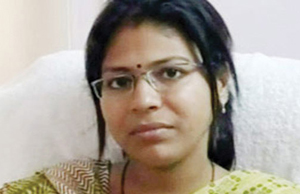 New Delhi, Aug 26: The Supreme Court today dismissed a plea for initiating contempt proceedings against the UP government and its Chief Minister for suspending IAS officer Durga Sakthi Nagpal, who had cracked down on the sand mafia in Gautam Budh Nagar.
New Delhi, Aug 26: The Supreme Court today dismissed a plea for initiating contempt proceedings against the UP government and its Chief Minister for suspending IAS officer Durga Sakthi Nagpal, who had cracked down on the sand mafia in Gautam Budh Nagar.
The petition filed by an advocate had contended that the officer had only complied with the orders of this court in demolishing the illegal structure and the decision of state government to suspend her amounts to contempt.
However, a bench comprising justices H L Dattu and S J Mukhopadhaya said nothing is there to show that there is wilful and deliberate contempt by any of the alleged contemnors (state authorities).
"How does the action of state government amounts to contempt," the bench asked and noted that the authorities by themselves have not taken any decision relating to the apex court's orders on preventing unauthorised construction of religious buildings on public land.
The bench also said that the contempt petition has been filed too early when the state government has not taken final decision on the charge sheet issued to her.
The bench said the stage of contempt would only arise after the officer files response to the charge sheet and the state government takes a final decision.
The petition, filed by advocate M L Sharma, had also named Chief Secretary Javed Usmani, working Chief Secretary Aalok Ranjan and the Centre as respondents.
The petition had contended that action against 28-year-old Nagpal was in contempt of the apex court order on preventing unauthorised construction of religious structures on public land.
"Following the Supreme Court direction is not an offence that has been performed by the officer concerned," he had said.
Sharma had moved the contempt petition after his PIL seeking reinstatement of Nagpal, a 2010 batch IAS officer, and quashing of all proceedings against her was dismissed by the apex court on August 16 on the ground that he had no locus to move court in that regard.
The sub-divisional magistrate was suspended on July 27 ostensibly for ordering demolition of the wall of an under construction mosque in a village in Noida without following the due process.
The petition had sought judicial review of the suspension order and said, "Nagpal's victimisation is a new low in a long process of the subversion of bureaucracy."
The Uttar Pradesh government had on August 4 served a charge sheet on the officer, asking her to submit an explanation for her conduct.





Comments
Add new comment